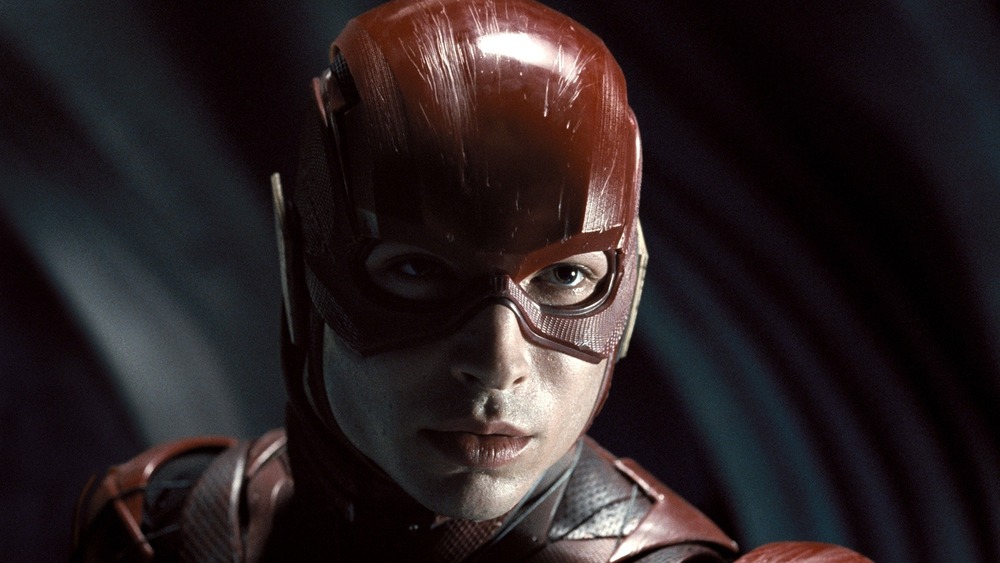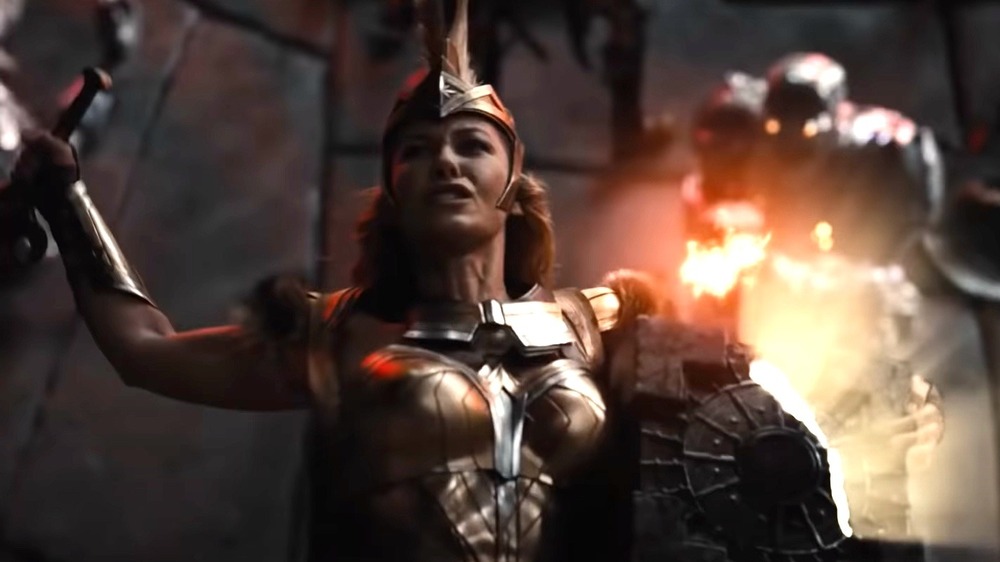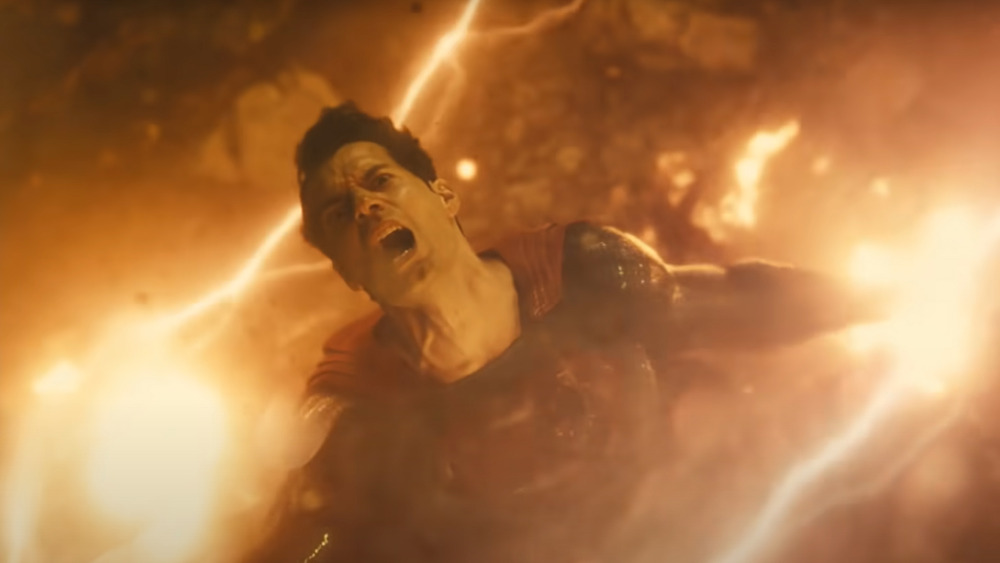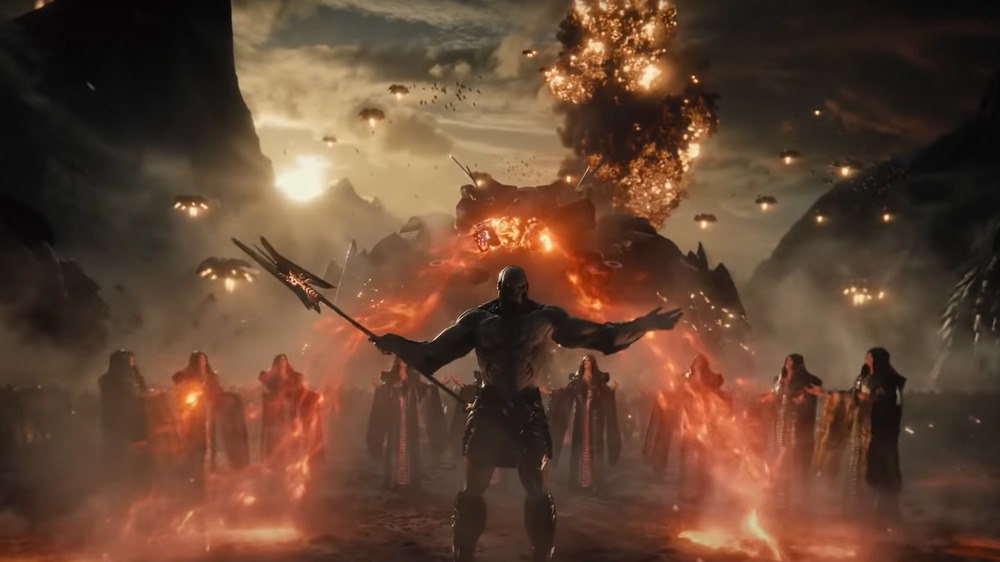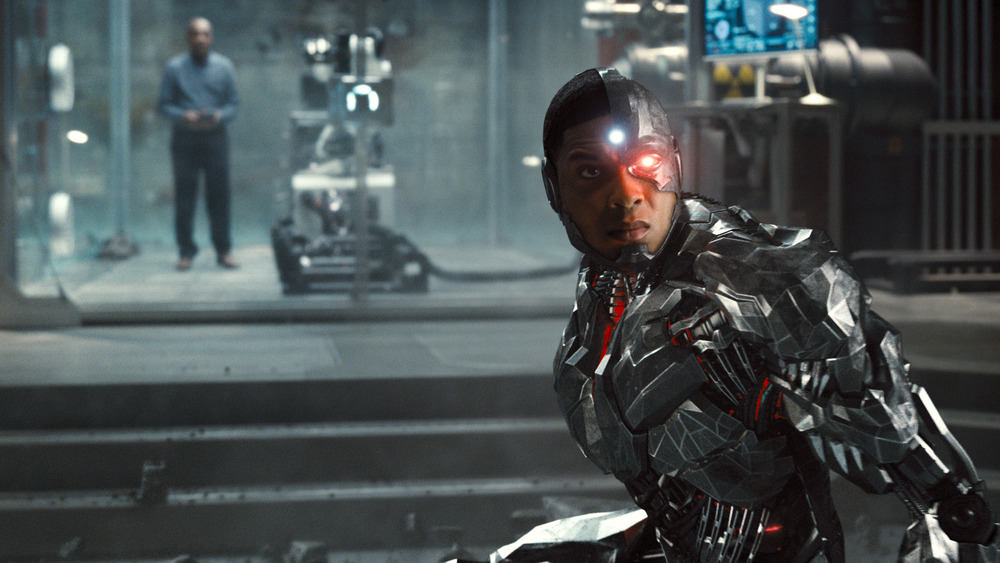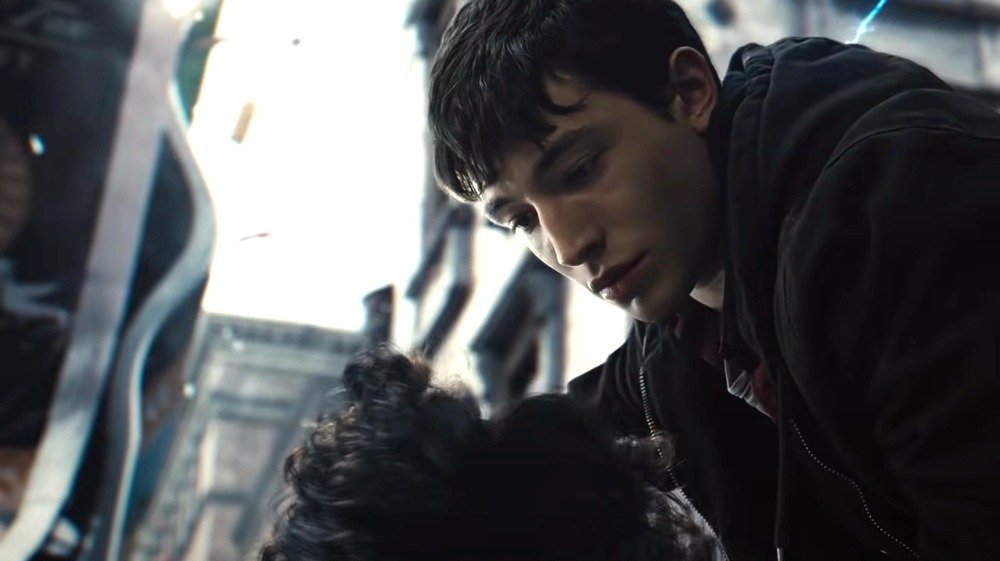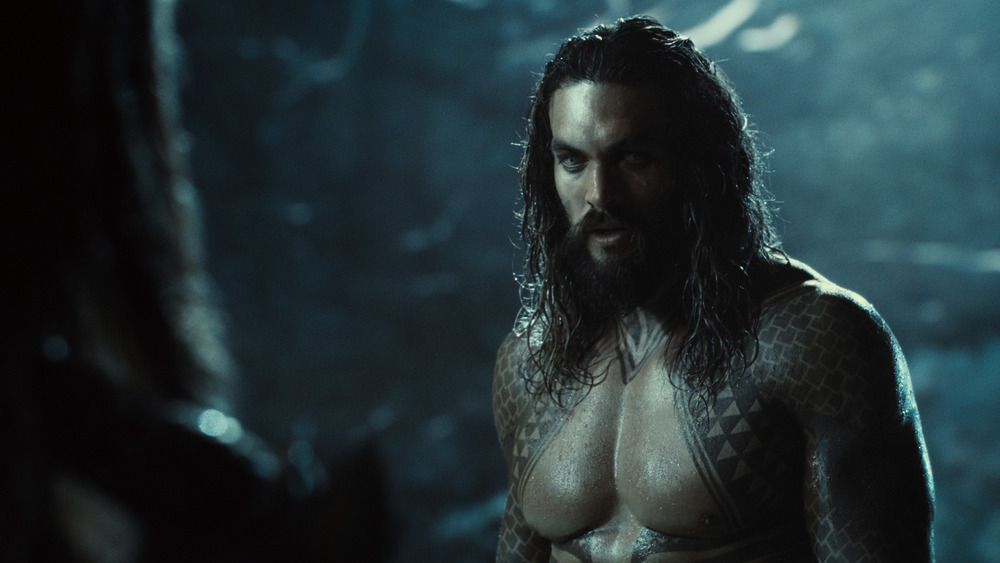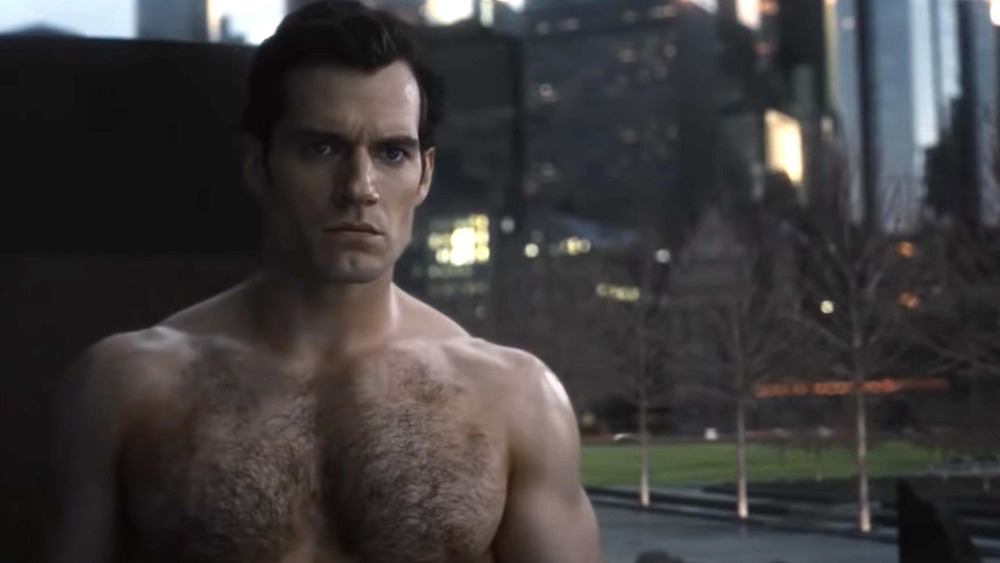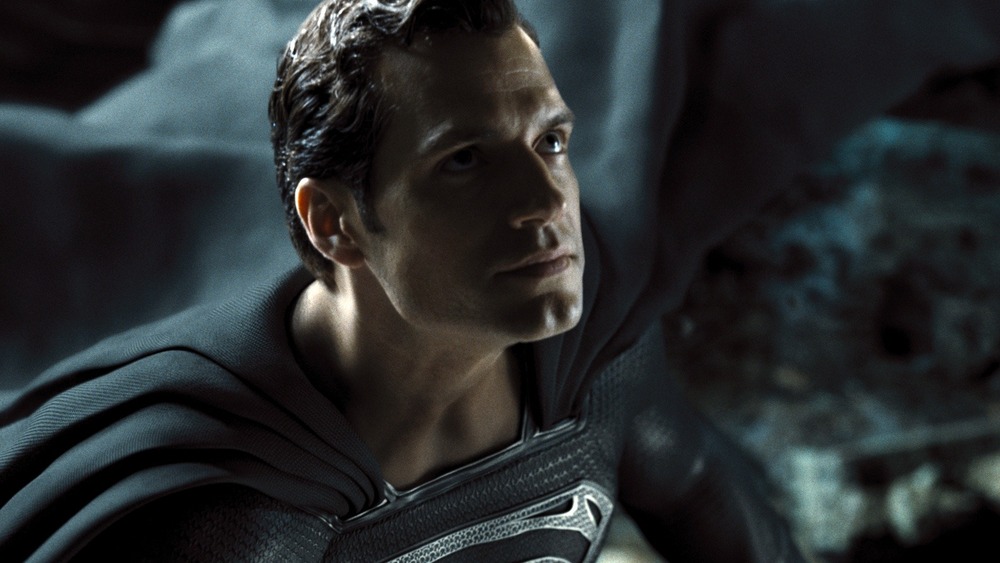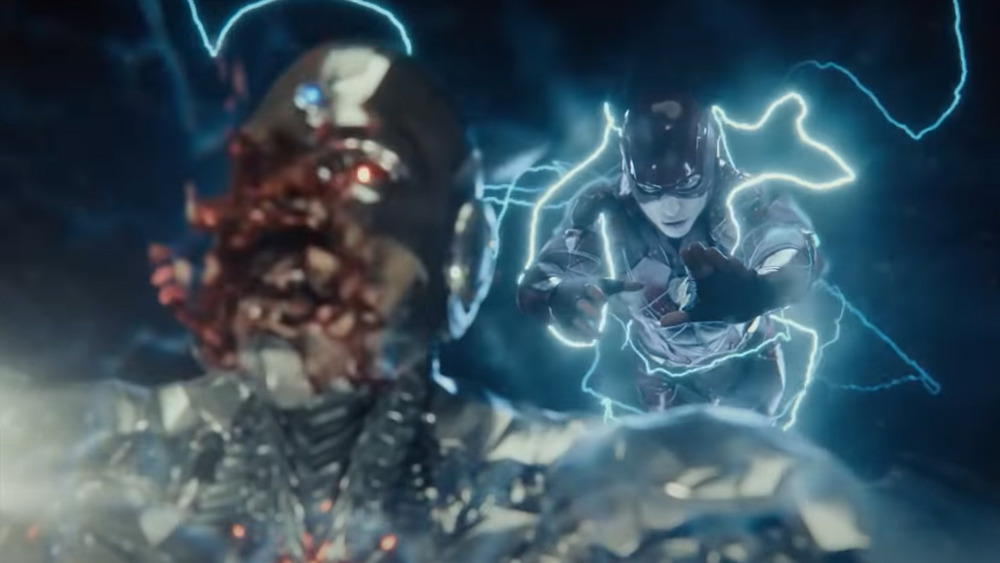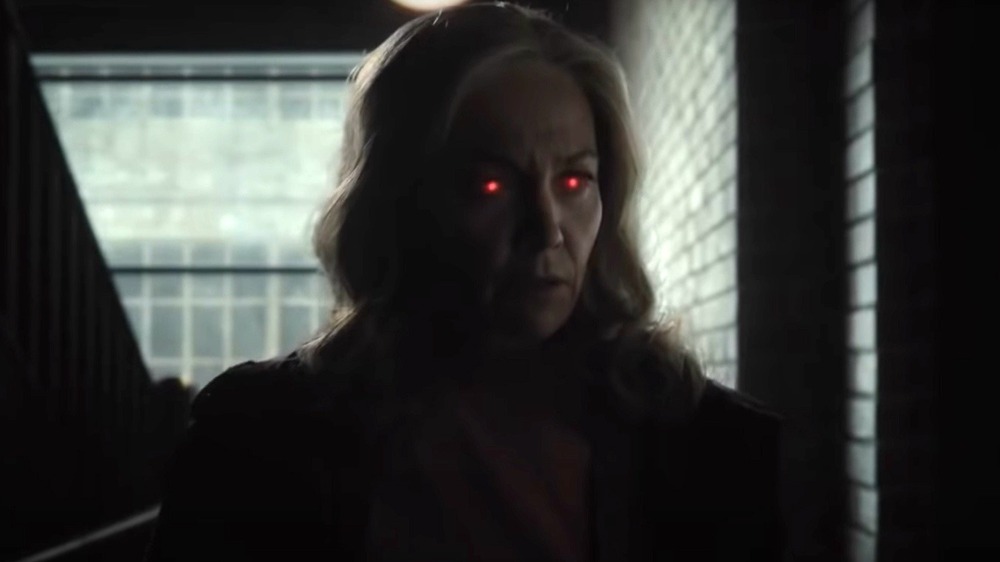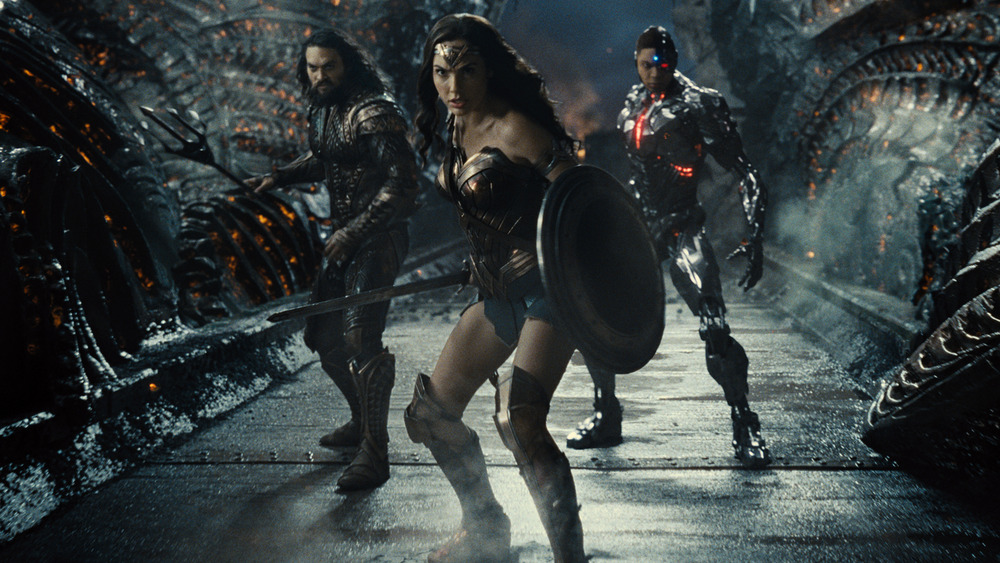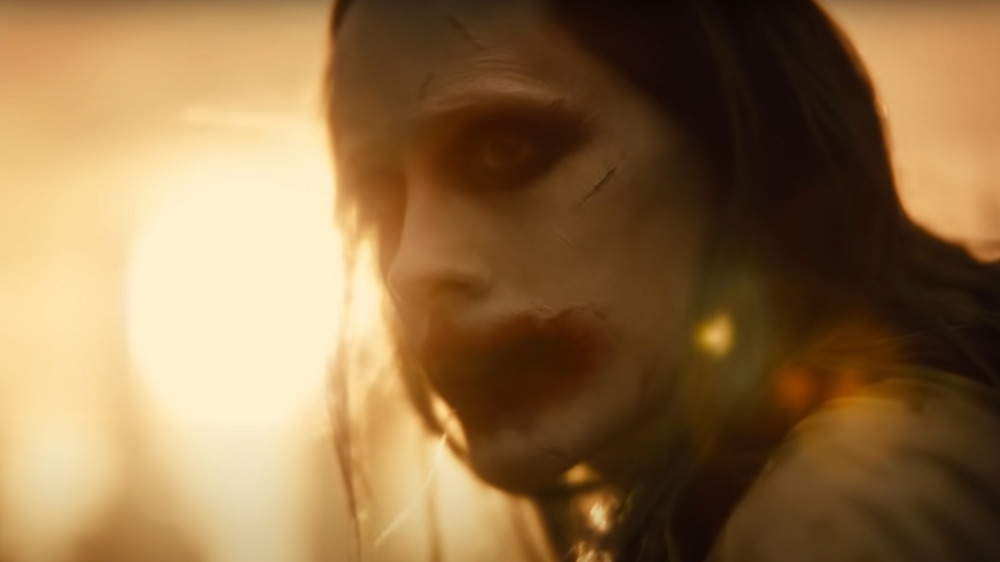6 Best And 6 Worst Scenes In Zack Snyder's Justice League
In case you've somehow missed it, Zack Snyder's Justice League, colloquially known as "The Snyder Cut," has finally materialized in the real world. You know the story — partway through the production of 2017's Justice League, Snyder left the project due to the tragic death of his daughter. Warner Bros. hired Avengers director Joss Whedon to finish it, and Whedon, presumably with the studio's blessing, altered the movie dramatically. The end result was a confusing mess that pleased essentially no one. Now, after more than three years of speculation, complete with a full-blown fan campaign calling for the film's release, the Snyder Cut has arrived in all its glory, brimming with all the signature Snyder-ness that the theatrical version lacked.
And the response has been largely positive. At the very least, critics and fans tend to agree that it's an improvement over Whedon's offering. That said, much of the critical praise can best be described as begrudging, and the fans that all but willed the film into existence were always going to love it. The fact of the matter is that every film has its merits and flaws, and a film like this one, a four-hour Frankenstein stitched together from released material, cut material, and newly shot material, will inevitably have scenes that worked and scenes that didn't. With the understanding that everyone has different opinions, it's time to break down the best and the worst of Zack Snyder's Justice League.
Best: Show him your fear
With a few exceptions, we're going to focus primarily here on scenes in the Snyder Cut that didn't appear in Whedon's film. However, there are several sequences, mostly action scenes, that have been significantly extended thanks to the new version's extreme runtime. One of the biggest beneficiaries of this is the battle between the Amazons of Themyscira, who were featured in 2017's Wonder Woman, and Justice League's primary villain, a monstrous alien called Steppenwolf. Not only has Steppenwolf himself undergone a much-needed visual redesign, but the scene in general makes more sense, as Whedon's cuts gave it a choppy feeling and made the story of the action difficult to follow.
Most of all, though, it's really cool to see Snyder making use of his characteristic action tendencies to emphasize just how badass the Amazons are. In Whedon's version, they come off mostly as a weak and easily overcome obstacle. Zack Snyder, in contrast, essentially gives us a glimpse of what 300 would have looked like with a female cast, and it's awesome. As if to highlight the comparison, before the battle begins, Steppenwolf says "I will bathe in your fear," to which Amazon leader Hippolyta responds, "Amazons! Show him your fear!" The subsequent mass cry of "We have no fear!" is one of the single greatest moments in the film.
Worst: The scream heard 'round the world
One thing Whedon was criticized for is injecting his trademark brand of humor — as seen in his two Avengers films — into a movie that, like its predecessors Man of Steel and Batman v Superman: Dawn of Justice, isn't exactly going for a humorous tone. Essentially, Whedon took Snyder's film and tried to turn it into an MCU movie, with more jokes and a generally more kid-friendly feel. Zack Snyder's films are many things, but they are rarely kid-friendly, and the Snyder Cut has a more cohesive tone that makes full use of its R rating.
Unfortunately, that often means swapping out-of-place light-heartedness for something worse: scenes that are painfully overdramatic. Whedon's Justice League opens in heartwarming fashion with kids interviewing Superman on a smart phone, followed by a newspaper reminder of Superman's death. The Snyder Cut scraps this, instead choosing to remind viewers of what happened at the end of Dawn of Justice by literally re-depicting Superman's death. His dying scream then creates a shockwave that travels around the entire world, introducing us to the other Justice League characters in the process. It's one thing to want to make a movie for adults. It's another thing to take yourself so seriously that Superman's death cry becomes your movie's entire opening framing device.
Best: The age of heroes
If there's one thing about the Snyder Cut that everyone agrees on, it's the fact that the extended runtime is necessary just to explain what the hell is going on. Justice League has an extremely complicated plot that relies heavily on obscure, previously unseen elements from DC comic books like Mother Boxes — unlike some films, it cries out for explanatory exposition. And while that explanation is largely cut from Whedon's movie, making it extremely difficult to follow, Snyder provides it in spades. In one lengthy new sequence, Wonder Woman explains most of the relevant details in voiceover while a flashback shows us an action scene pitting an ancient alliance of Earth's heroes — Amazons, Atlanteans, Zeus and Ares, and even a Green Lantern — against the power of Darkseid, DC Comics' ultimate villain, who doesn't appear in Whedon's film at all.
Comic book fans might scoff somewhat at Darkseid actually engaging in battle rather than sitting back and letting others fight on his behalf, but it's an objectively incredible and engaging battle reminiscent of, if not nearly as emotionally or narratively satisfying as, the climax of Avengers: Endgame. We needed this exposition, and there's no better way to get it than while watching an alien warlord get chopped nearly in half by a Greek god.
Worst: Cyborg's origin story
We love Ray Fisher, and we're glad he has such an expanded role in the Snyder Cut, particularly given the way both he and his character were treated by Whedon. Cyborg is now essentially the central protagonist — he's really the only hero who gets a character arc — and the inclusion of his story makes Synder's film better than Whedon's basically on its own. But this is still a Chris Terrio script, and while Fisher admirably manages to invest most of his scenes with tangible emotion, Cyborg's new origin story is a complete mess.
In short, football player Victor Stone has a bad relationship with his neglectful scientist father Silas, who, after a car accident puts Victor on death's door, saves Victor by transforming him into Cyborg. Only Silas doesn't build Victor a cyborg body — he simply turns on a Mother Box, which makes Victor a cyborg for unknown reasons. Victor is upset by this, though we don't really know why — he now has total control over technology and digital information, a functionally godlike power that puts him on the same level as the other heroes, but he has a complicated relationship with the idea of helping people. The entire story has a strangely familiar Man of Steel vibe, complete with Silas' later act of martyrdom mirroring that of Jonathan Kent, and it just makes you wish Fisher had been given his own movie — and his own character — instead of being just another Zack Snyder Übermensch.
Best: Barry to the rescue
Cyborg's origins might not have been exactly what we wanted, but at least he has a significant role in the film — and he's not the only one getting more of that sweet 242-minute screen time. Ezra Miller's performance as Barry Allen, better known as the Flash, was one of the high points of the theatrical Justice League, but Miller wasn't given much time to shine. In the Snyder Cut, his role is significantly expanded, and he remains a major highlight of the film. In particular, his introductory scene, not present in Whedon's version, is something of a miniature masterpiece, utilizing everything Snyder does well as a filmmaker, including his propensity for pop music needle drops. Kiersey Clemons gets a cameo as longtime Flash love interest Iris West, who Barry saves from a car accident, and the moment when they stare into each other's eyes as Iris' car explodes behind them is a beautifully artistic shot.
There isn't much room for jokes in the Snyder Cut, but Miller's ability to deliver comedic dialogue with a subtle undercurrent of sadness allows him to maintain the movie's tone and become more than just comic relief. It sure beats lame Whedon sight gags like landing with his face in Wonder Woman's chest.
Worst: Speech bubbles
In contrast, it's possible no character benefits less from his increased screen time than Jason Momoa's Aquaman, whose Whedon-directed comedic moments have been dismissed by Snyder in favor of the same brooding melancholy that typifies almost every other member of the Justice League. Snyder also expands Aquaman's interactions with his fellow Atlanteans, primarily via a pair of altered scenes in which he converses with his mentor Vulko, played by Willem Dafoe, and with Mera, played by Amber Heard. Considering the time frames involved, it's not exactly a knock on Snyder to point out that these scenes don't match up with the characters as they appear in 2018's Aquaman — Vulko has a different look in the Snyder Cut, and Mera, for some reason, has a terrible British accent — but it does take away from the viewing experience if you've seen Aquaman, one of the better received films in the DCEU. There's still some consistent foreshadowing to be found in these scenes, but for the most part, they're just anachronistic relics of what the DCEU would have looked like had Snyder remained at the helm. Given some of the decisions made in the Snyder Cut, such as the bizarre air bubbles that the Atlanteans form around themselves so they can speak to one another, that might not be the worst thing.
Best: Evil Superman
The scene in which Superman, newly risen from the dead and unaware of who he is, attacks the Justice League, also appears in the Whedon cut of the film in mostly the same fashion. Still, the fact that it remains largely unchanged is merely a credit to the fact that it's probably the single best scene in both versions. Just the idea of Superman losing touch with his morality and turning on his teammates is more terrifying than anything Steppenwolf does — the moment when Flash runs past Superman, everyone else around him frozen by his speed, only for Superman to slowly turn his head and look Barry in the eyes, is the scariest thing in the entire movie.
The primary change to this scene in the Snyder Cut comes toward the end of the fight. In the Whedon movie, Superman knocks Batman into a car and lifts him into the air, then they proceed to exchange dialogue calling back to Dawn of Justice, a choice that doesn't make much sense if we're saying Superman doesn't remember who he is. Snyder eschews dialogue entirely for this confrontation, having Superman simply open fire on Batman with his laser vision. While it definitely plays into Snyder's dreary insistence on gritty realism in his superheroes, it also makes more sense.
Worst: Bore-tress of solitude
No matter who's directing Justice League, it can't be argued that Superman is only in the film for one reason: To come back to life and trash the bad guys, because he's Superman. In both versions, both narratively and thematically, the absence of Superman is what allows the forces of evil to attack the Earth, and the ultimate solution for stopping the forces of evil is to bring him back. That's why he's here, and there's no reason whatsoever to waste time with Superman character work. The scene when he reunites with his mother and Lois Lane is fine, but after that, he should be heading straight back to the action.
Instead, the Snyder Cut gives him an extended detour at the Fortress of Solitude, where he hears the voices of both of his fathers and appears to go through a fast-forwarded version of his character arc from Man of Steel before finally flying off to help his friends. Black suit or no black suit, it's a baffling choice. We get that Snyder wanted the climactic battle to be in full swing before Superman makes his dramatic entrance, but there was simply no need for a Man of Steel recap, particularly in a movie that's four hours long.
Best: Flash to the rescue
If you thought Flash's introductory scene did wonders for his Snyder Cut stock, that's nothing compared to what he does during the film's final battle. In Whedon's movie, Barry has a pretty marginal role in the Justice League beating the bad guy. He takes out a few parademons and gets knocked around by Steppenwolf once or twice, but he's mainly on "get the civilians to a safe distance" duty — and even in that task, he's outclassed by Superman. Oh, and he makes a lot of jokes, most of which fail to land.
Quite the opposite is true of the Snyder Cut, in which the Justice League's heroics come too late, and Steppenwolf's doomsday plan comes to fruition. As a result, it's up to the Flash to save the day, as he pushes himself through an injury to run so fast that he goes back in time, altering the immediate past and ensuring the team's ultimate victory. Visually, it's an absolutely stunning piece of filmmaking, a modern callback to the very first Superman film. More importantly, it gives Flash a hero moment on par with any of his superhero contemporaries, making him truly worthy of the Justice League.
Worst: Bait and body switch
One of the things the Snyder Cut does really well is convey the deep feeling of grief that has swept over the world in the wake of Superman's death. Unlike the Whedon version, the plan to resurrect Superman doesn't come from Batman and Wonder Woman's feelings of inadequacy in their leadership positions, but because there's a palpable sense from every character that they simply can't do this without Kal-El. Adding to this is the fact that the movie spends time with both Lois Lane and Martha Kent as they grieve, culminating in a poignant scene in which Martha convinces Lois to go back to living her life. It's a beautiful moment, and extremely valuable to Snyder's themes of hope and loss.
And then immediately after it ends, it's entirely undercut by the reveal that Martha was apparently the Martian Manhunter in disguise. We don't even know who the Manhunter is yet — and we really never do, despite his painfully forced appearance in the film's final scene — but apparently he's manipulating Lois to go back to work so she'll visit the Superman monument one last time and be around to save everyone from Evil Superman? That's the best explanation we can come up with, and it's terrible. Of all the cameos that didn't need to be included, this reveal takes one of the Snyder Cut's best moments and turns it into one of its worst.
Best: Zack Snyder's Justice League
Whedon's movie suffers from severe tonal whiplash, as Snyder's heavy-handed superhero mythologizing had all its edges sanded down for the kids, and nothing drives that point home deeper than the final battle between the Justice League and Steppenwolf. There are some shots from this sequence that were used in both films, but for the most part, it's an entirely different scene — one that, most notably, kicks up the violence being dished out by our heroes to a whole new level.
Despite the fact that Superman's arrival alone should spell an end to the combat, Whedon manages to drag things out by having him briefly go on civilian rescue duty mid-fight. Snyder has Superman show up and just start whaling on Steppenwolf, who very clearly never has a chance. Whedon's movie has a shot of Superman standing above Steppenwolf and blasting him with eye beams; in Snyder's movie, Superman uses his eye beams to sever one of Steppenwolf's horns. In the theatrical Justice League, Steppenwolf gets scared when his axe is destroyed, leading the parademons to turn on him before they all get beamed up. In the Snyder Cut, just as the portal is opening to bring Darkseid to Earth, Aquaman impales Steppenwolf with his trident before Wonder Woman decapitates him, sending his head spinning through the portal to land at Darkseid's feet. Overly gory for a superhero movie? Perhaps. In keeping with the tone Snyder has established, both in this film and others? Absolutely.
Worst: Knightmare 2 (Even Knightier)
The Snyder Cut's "epilogue" is half an hour long and includes not just the Lex Luthor and Deathstroke material that served as a post-credits scene for the theatrical version, but a sequence that, unlike the rest of the film, was shot entirely for the release of Zack Snyder's Justice League on HBO Max. In it, Bruce Wayne has a dream similar to the one he has in Dawn of Justice — an apocalyptic future brought on by Superman. In this version, Batman is trudging through the wasteland alongside his Justice League teammates, plus Mera, who has apparently taken over for the deceased Aquaman. Then, in a moment that still has fans buzzing today, Batman has a conversation with the Joker, with Jared Leto reprising his role from 2016's Suicide Squad.
Frankly, there is no reason to do this. The scene wouldn't have had a place in the film even if Snyder was still the man in charge of the DCEU — now that he's not, shooting new footage to try and show everyone how cool his future movies would have been comes off, perhaps uncharitably, as a colossal act of vanity. Leto's Joker wasn't good in Suicide Squad and isn't good here, Batman promising to kill him is eye-rollingly dumb, and while #RestoreTheSnyderVerse is already a thing, the scene does nothing but reference plot points that do not and will not exist. Instead of simply delivering his original movie, Snyder gets greedy and face-plants at the finish line.
